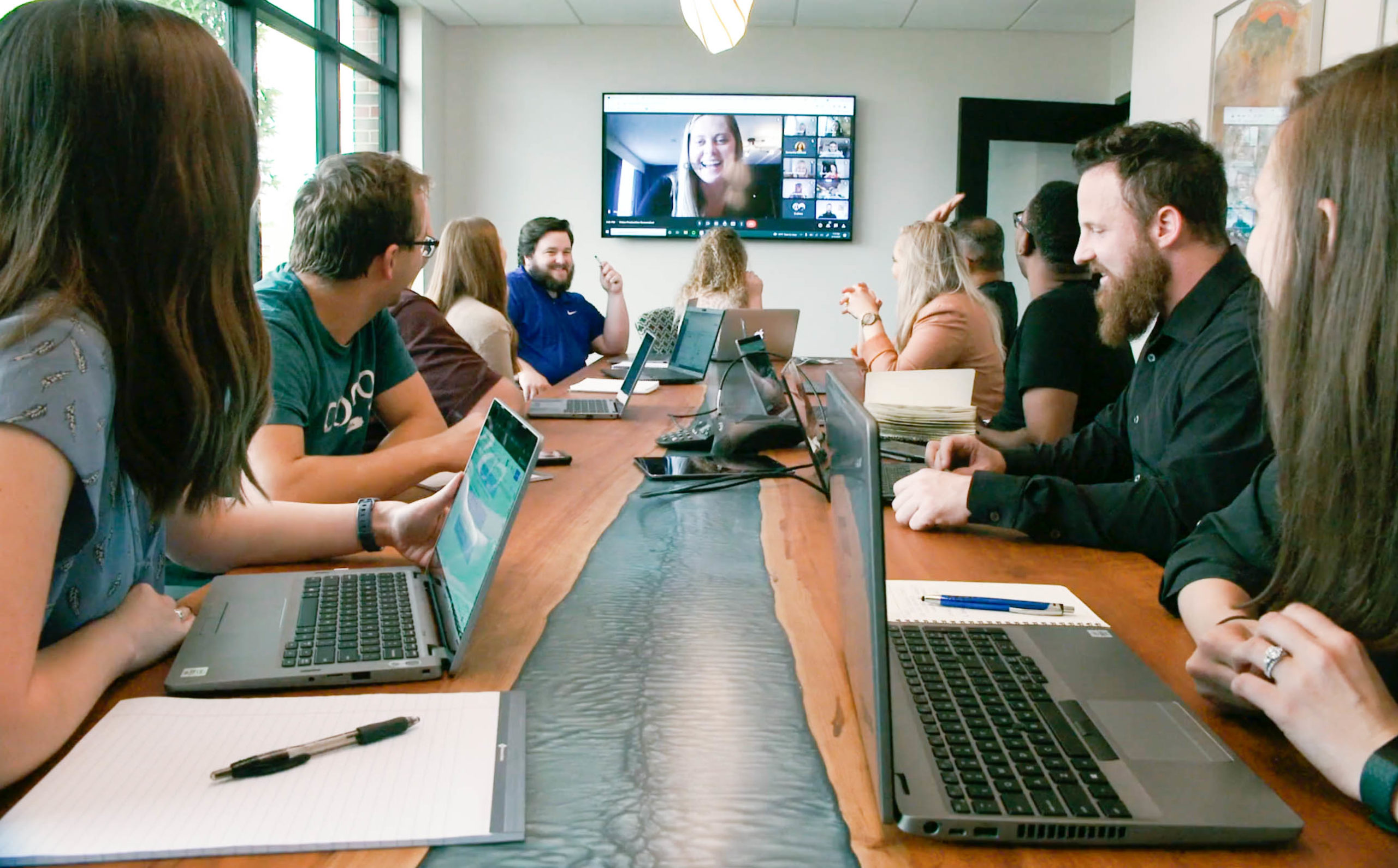With the rise of cord-cutting and the 2023 Hollywood strikes delaying content creation, tapping into live-streaming CTV inventory has piqued marketers’ interest with its ability to reach a highly engaged audience. Live-streaming offers brands a valuable space to programmatically connect with consumers at scale to drive awareness goals with the added benefit of flexibility that is not found in traditional linear TV buys. If you’ve been on the fence about testing live streaming in your marketing initiative, you likely have many questions regarding how to efficiently and effectively leverage this inventory.
For this Live Streaming Q&A article, we met with two CTV experts – Stephen Eidelman, Director of Inventory Development at The Trade Desk, and Joel Schaffner, Manager of Programmatic Operations at Coegi. They answered key questions to help inform your planning and activation of live streaming inventory to achieve your brand goals.
Why should advertisers incorporate live-streaming CTV into their strategic plan?
Joel: Incorporating live streaming CTV into a strategic plan is a great way to reach a new set of users at a slightly different angle. The live-streaming viewer is typically more engaged since they’re watching content in real-time, instead of having something on in the background that they can go back and watch later.
Stephen: Similar to the reason they have been historically coveted properties in linear TV advertising, live sports are highly sought after because they draw large audiences that are attentive and emotionally engaged – up through the very last second. Not only does streaming account for more than 30% of live sports viewership, but we’ve also seen advertisers reach audiences that are completely unique compared to audiences in linear live sports and non-live sports streaming, meaning the only way to connect with that audience is by buying on live streaming sports.
What has been a key driver of the increase in interest and investment in live streaming?
Stephen: Viewership patterns have shifted, so much so that the majority of Americans are expected to be watching live sports via digital channels by next year. At the same time, top-tier broadcasters like NBC and Disney have continued to shift more of their highly valued properties to be distributed exclusively on streaming apps (i.e. Peacock & ESPN+). Some of the most sought-after content is only available on streaming, and you saw that this year with NFL games exclusively on ESPN+ or Peacock. Fans are a more passionate audience than regular viewers, and they can’t miss a game!
Joel: I think a couple of things have been key drivers in the growing interest of live streaming. For one, the pandemic accelerated the trend of people cord-cutting and shifting to streaming services, making live streaming an avenue to reach a larger, more highly engaged audience. Another thing is that live streaming inventory is much more accessible now, so marketers can seamlessly integrate it into their plans to test and compare performance with other streaming inventory.
How can marketers measure the impact of live-streaming CTV on brand goals?
Joel: Reach is a primary KPI for CTV in general, but especially for live streaming inventory since it is often seen as a mass reach play. With our partner, The Trade Desk, we can measure the quality of reach by comparing the users the CTV campaign reached to the seed audience, such as site visitors, sales data, and CRM lists. This measures the quality of our reach and helps us optimize media spending toward users that drive brand goals. We can also track offline actions, enabling conversion attribution to a user exposed to our brands’ live-streaming ads.
Stephen: This is the beauty of live sports in streaming, you can achieve the same goals, and measure the same impact in live sports as you do in the rest of streaming. Whether it’s awareness, incremental reach, or outcome impact, all the targeting and measurement available in streaming is available in CTV.
What is the impact on user engagement running in live streaming compared to standard CTV?
Joel: Standard CTV user engagement is valuable since media is reaching an entire household on the biggest screen, but live streaming takes this engagement to another level. The real-time factor of live-streaming content means that the audience is more engaged as they set time aside from their day to watch this specific event.
Stephen: Live sports engagement is highly concentrated because the viewership patterns are usually in a set period of time, either a few minutes or several hours if they’re binging sports all day. The spikes in traffic are larger, so live sports can generate a larger audience reach much faster compared to other genres.
What are some best practices marketers should know for live streaming?
Stephen: Start broader and build your campaigns across all sports and leagues since there are live sports with big audiences all year round. You can also gain flexibility by getting into live sports programmatically without being tied to larger commitments or spending thresholds that are often required of traditional TV advertising. The growth of streaming allows for more and more types of sports to be aired, meaning more opportunities for advertisers as more diehard fans watch live sports via streaming.
Joel: Some best practices marketers should consider when planning and executing campaigns on live streaming are to:
- Plan in advance
- Plan for higher CPMs than standard CTV due to the high demand of live-streaming content, and
- Invest in high-quality and meaningful creatives since these ads will be seen on a big screen with highly engaged viewers
Are there any potential challenges to be aware of when leveraging live streaming?
Stephen: Live sports are unpredictable, and no two campaigns in live sports will be the same. That’s dependent on the sport, the teams involved, the time of day and so much more, so don’t expect that you can replicate the same recipe every live game. Aaron Rodgers getting injured in the first few minutes of the Jets season is a prime example of that – and also why advertisers need flexibility rather than being locked into deals for games that became far less appealing without start power. One thing to be conscious of is league sponsorships and other agreed upon contracts that may limit access to inventory. However, we see so much scale in live sports that advertisers should not be deterred – in fact, we’ve seen over one billion impressions of football-related content in a given weekend. Imagine all of the opportunities just in one weekend alone.
Joel: Of course, there are potential challenges to be aware of when leveraging live streaming but challenges is what makes the programmatic team at Coegi thrive! One obvious challenge can be the seasonality of live-streaming events which causes a high demand for the inventory. You can mitigate the shifts in demand by continuously monitoring the campaign’s bidding parameters and adjusting as needed in order to win in the ad auction.
What criteria should marketers consider when selecting live-streaming inventory?
Stephen: It’s important to approach live streaming with a balance of the marketing initiative’s overall goals (e.g. reach, frequency, outcomes) since regional and national live-streaming content are both available. By sticking to an audience strategy and testing across all live sports, for example, there is an opportunity for unconventional wisdom (sports co-viewing) and to find audiences when they are highly engaged and leaned in.
Joel: When selecting live streaming inventory, marketers should consider what type of event their ad will be viewed during – college sports, professional sports, awards shows, etc. It’s important to consider because each live event draws a different audience with various interests and purchase intents.
What audience targeting strategies should marketers utilize to effectively reach their core audience?
Joel: Always consider the geotargeting parameters as some regions may align more with the marketing goal. Demographics, such as age, are also important to broadly refine the core audience media intends to reach. When thinking of data-driven audience strategies, try to keep this fairly broad as live streaming inventory is competitive, and efficiently scaling can be a challenge if too many variables are layered on.
Stephen: Advertisers need to understand who their audience is in live sports if they want to provide the best ad experience and use a strategy rooted in precisely reaching the core audience when and where they are watching live sports. Building your strategy around strong, authenticated data so you can see that the avid baseball viewer is also a loyal grocery store shopper requires a cross-channel identifier like UID2. This is especially important since much of the rise in live sports viewership is also taking place on non-traditional TV devices, such as tablets and mobile phones, so you want to connect the dots across viewers and devices for the best ad experience.
And finally, what piece of advice would you give to markets to run a successful live-streaming CTV campaign?
Stephen: Getting in programmatically provides cost efficiency by offering flexibility, control, and access that otherwise would only be available from larger networks or league sponsorships. If a game is a blow out by halftime, you don’t risk wasting budget on the second half that likely had significantly less viewership. Consolidating live sports within your CTV planning will also give marketers better decisioning and frequency management with the line of sight into the rest of the marketing objectives.
Joel: As most live events are scheduled at least a year in advance, it’s never too early to start planning. However, I recommend planning at least one month in advance of the campaign’s intended launch date. One of the first things to consider during the planning period is what kind of live events to incorporate in the strategy in order to reach the right audience.
To learn more about broader CTV strategies, check out our other Q&A with The Trade Desk or take a deep dive with Connected TV Advertising Guide.






